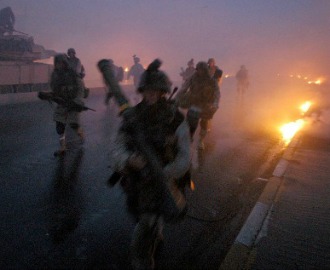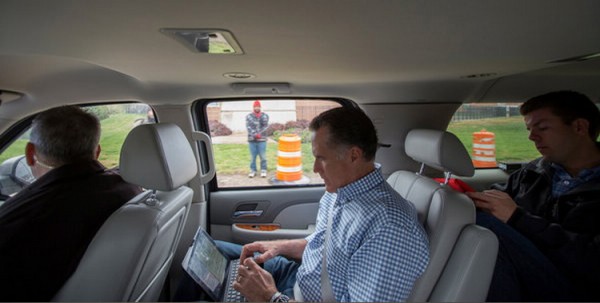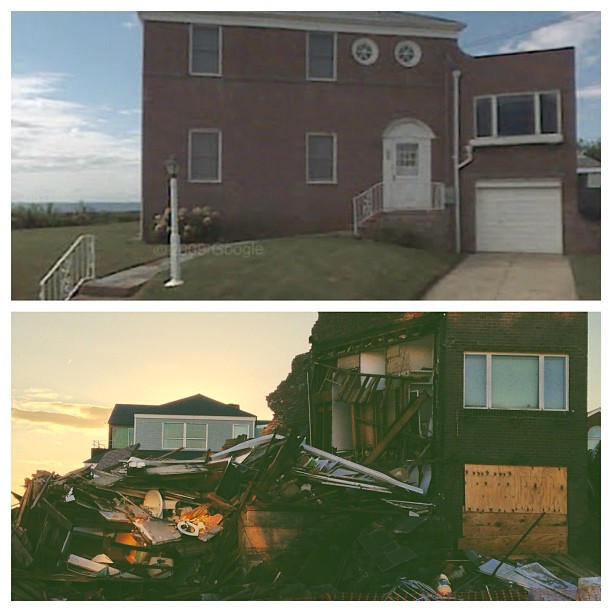Link: Corbis steps back from Visa | Le Journal de la Photographie
Category: Photojournalism
-
Veteran Miami Herald Photographer Tim Chapman Retiring His Camera
Veteran Miami Herald Photographer Tim Chapman Retiring His Camera
Dare to ride the streets of Miami with Tim Chapman and he’ll lay out the rules before putting the car in gear.
“You can ride with me if you don’t mind smelling like a cigar, if you don’t complain about how fast I drive,” Chapman explains, before adding, “and you have to be willing to listen to Jimi Hendrix.”
-
‘Daily News’ cuts a big chunk of photographers from its roster
Link: ‘Daily News’ cuts a big chunk of photographers from its roster | Capital New York
“The Daily News is disbanding its pool of photo permalancers, employees who work full-time hours for the tabloid on set day-rates but are not salaried employees with benefits, Capital has learned.
“
-

Overexposed: A Photographer’s War With PTSD
Overexposed: A Photographer’s War With PTSD
“One of the truly great things about war … is that all you have to do is survive.”
via The Atlantic: http://www.theatlantic.com/health/archive/2012/12/overexposed-a-photographers-war-with-ptsd/266468/1/
“‘I don’t think you can go into the most traumatic situations that arise on earth, voluntarily, and come back unchanged,’ said Ashley Gilbertson, who admits that his experience in Iraq is never far from thought.
Eight years after Gilbertson and Dexter Filkins climbed those steps, those perilous moments on the step have followed Gilbertson.
‘A 22-year-old kid was killed because Ashley needed a photograph,’ Filkins said. ‘He’s tormented by that.’”
-
Photojournalism in 2012: A year of excellence, ethical challenges and errors
Link: Photojournalism in 2012: A year of excellence, ethical challenges and errors | Poynter.
As 2012 nears its end, we look back at the major trends and memorable events that defined photography and photojournalism this year.
-
The Story Behind A Striking Image Of The Scene At Sandy Hook
The Story Behind A Striking Image Of The Scene At Sandy Hook
Moments after a brutal attack began at an elementary school in Newtown, Conn., Friday, Newtown Bee associate editor Shannon Hicks sped to the scene. Before the day was over, she would act in two capacities: as a journalist, and as a volunteer firefighter.
via NPR.org: http://www.npr.org/blogs/thetwo-way/2012/12/16/167395779/the-story-behind-a-striking-image-of-the-scene-at-sandy-hook
Moments after a brutal attack began at an elementary school in Newtown, Conn., Friday, Shannon Hicks sped to the scene. She was responding in two capacities: as a volunteer firefighter, and as an employee of the local weekly newspaper, The Newtown Bee.
-
Goodbye Newsweek! — Jim Colton

Link: Goodbye Newsweek! — Jim Colton
A piece of me will also die with that last issue. Of all the places I have worked in my career, never was there an organization filled with more talent than at Newsweek. I had the great honor of working for some of the finest editors, writers and journalists…anywhere…hands down!
-
Innovator: Eugene Richards
Innovator: Eugene Richards
By Stephen WolgastFor more than 40 years, Eugene Richards has held a mirror to society. Even his simplest images are packed with nuance, composed with a literary quality that pulls the viewer deeper. It’s a style that asks the viewer not to just see the p
via NPPA: https://www.nppa.org/page/innovator-eugene-richards
Richards has cast aside the notion that photographs speak for themselves. Words make an increasingly significant contribution — providing another dimension, telling the back-story, revealing his subjects’ motivations (and, sometimes, his own), creating complementary tales that are richer precisely because they diverge.
-
The Instagram War: Gaza & Israel, 2012
The Instagram War: Gaza & Israel, 2012
…welcome to a media space in which we are consuming hostility and processing raw data and raw propaganda almost as quickly as the war correspondent, the fighter pilot, the governments, the diplomats and the antagonists themselves. –Michael Shaw * * * U
via John Edwin Mason: Documentary, Motorsports, Photo History: http://johnedwinmason.typepad.com/john_edwin_mason_photogra/2012/11/instagram-war-gaza.html
Propaganda has been a part of every war that history knows anything about, and creating and disseminating it has largely been the job of professionals — war doctors, priests, reporters, photographers, politicians, bureaucrats.
Social media and smart phones have let amateurs in on the action
-
Associated Press, DAPD and DPA: Updates
Link: Associated Press, DAPD and DPA: Updates | Le Journal de la Photographie
The blow is more severe for the DAPD agency. In the opinion of some German colleagues, this is DAPD’s death sentence, and it also puts in danger the Hamburg-based photo subsidiary DDP, directed by Ulf Schmidt-Funke, the former president of Sipa Press.
-
The Failure in Crowd-Sourcing News Photos
The Failure in Crowd-Sourcing News Photos | PDNPulse
At a time of cost cutting for media budgets, lots of news organizations imagine that user-generated content can fill the void. But the recent failure of crowd-sourced news photos of Hurricane Sandy, and the shortage of coverage of other climate change-fue
via PDNPulse: http://pdnpulse.com/2012/11/the-failure-in-crowd-sourcing-news-photos.html
the recent failure of crowd-sourced news photos of Hurricane Sandy, and the shortage of coverage of other climate change-fueled disasters around the world, demonstrate how far we are from truly democratizing the medium of photography
-

Documentary Workshops for Local Photographers
An Inside View on Documentary Stories
Mentoring and workshops have helped give local photographers, in Egypt and around the world, the time and resources to document their society’s issues with the delicacy and insight that might go unnoticed by foreigners.
via Lens Blog: http://lens.blogs.nytimes.com/2012/11/08/an-inside-view-on-documentary-stories/
“Most photojournalists only do news photography and are accepted in that. However, working long term on a project is not understood, and there are many challenges in getting access. And independent journalists are unfortunately treated with a lot of reservations and skepticism.”
-

The Brilliant Stephen Crowley’s So Long to Mitt Romney
The Last Slideshow: The Brilliant Stephen Crowley’s So Long to Mitt Romney – Reading The Pictures
In the last photo of the last slideshow before signing off on the Romney campaign, Crowley makes a sweet gesture.
via Reading The Pictures: http://www.bagnewsnotes.com/2012/11/the-last-slideshow-the-brilliant-stephen-crowleys-so-long-to-mitt-romney/?utm_source=feedburner&utm_medium=feed&utm_campaign=Feed%3A+Bagnewsnotes+%28BAGnewsNotes%29
On face value, Stephen Crowley is merely offering glimpses into stagecraft and campaign ephemera. Look further though, and the photos are silent editorials, even essays about the candidate, his personality and political culture.
-

Thinkings On Photographs Of Hurricane Sandy
Thinkings On Photographs Of Hurricane Sandy
Photo: Timothy Briner, from It’s A Helluva Town, in Businessweek. THE BEST SHOT Timothy Briner is doing the most different stuff. Whether being different will distinguish it from the crowd, w…
via Prison Photography: http://prisonphotography.org/2012/11/06/thinkings-on-photographs-of-hurricane-sandy/
Virginia photographer, Michael Mergen, has one of the best series I’ve seen about where and how we vote. His project, VOTE, shines a stunning light on how “mom and pop” our voting system is and reflects the head-scratching realization that it is truly a miracle that we get anyone elected
-
POV: Much Ado About An Instagram Cover Photo?
POV: Much Ado About An Instagram Cover Photo?
travel photographer
Link: http://thetravelphotographer.blogspot.com/2012/11/pov-much-ado-about-instagram-cover-photo.html
As I’m fond of saying to anyone who’ll half-listen…what you use to make a photograph is really irrelevant
-
Great Job, You’re Fired!
Great Job, You’re Fired!
Instagramers, I was talking about photojournalists here, not you. If your work brings you joy, carry on. There’s nothing to see here and I fully realize you can’t learn anything from an old man like me (but thank you for continuing to point this out).
Ask yourself, what would Jim do? If an editor asked him to shoot an important assignment with his iPhone do you think he’d do it? Do you think he’d risk his credibility like that?
You can put it in historical, pre-digital terms if you like. If Life Magazine asked Henri Cartier-Bresson to shoot a hurricane with a Brownie, what do you think he’d tell them? Yeah you’re right, and it doesn’t sound any better in French either.
Photographers, if you don’t give people something great, you’ll die too.
-
Instagram, the Devil, and You
Instagram, the Devil, and You
When a photojournalist uses Instagram, the devil smiles. He keeps it handy, in the top drawer of his toolbox, sitting right next to true love.
Instead of having a body of work to look back on, you’ll have a sad little collection of noisy digital files that were disposable when you made them, instantly forgotten by your followers (after they gave you a thumbs up), and now totally worthless.
-
How to tell a story with pictures (part 2)
Link: Conscientious Extended | How to tell a story with pictures (part 2)
before you can tell a story as a photographer you need to understand what your images might say and how they say it.
-
Shadows of the Gullah by Pete Marovich
Shadows of the Gullah
Descendants of enslaved Africans, the Gullah/Geechee are fighting to hold on to their land and culture in the face of development.
via Kickstarter: http://www.kickstarter.com/projects/1957876924/shadows-of-the-gullah
Descendants of enslaved Africans, the Gullah/Geechee are fighting to hold on to their land and culture in the face of development.
-
War Reporters Train in the Bronx, Complete With Blood, Smoke and Gunfire
War Reporters Train in the Bronx, Complete With Blood, Smoke and Gunfire
An organization founded by friends of Tim Hetherington simulates real war-injury scenarios at the Bronx Documentary Center, complete with pools of blood, contorted limbs and frenetic movement amid smoke-clad air, in order to train photographers and journa
via WIRED: http://www.wired.com/rawfile/2012/10/risc-training-bronx-documentary-center/
“Tim was my closest friend,” says Michael Kamber, founder and director of the Bronx Documentary Center. “He bled to death because he was surrounded by photographers who didn’t know how to stop the bleeding.”
